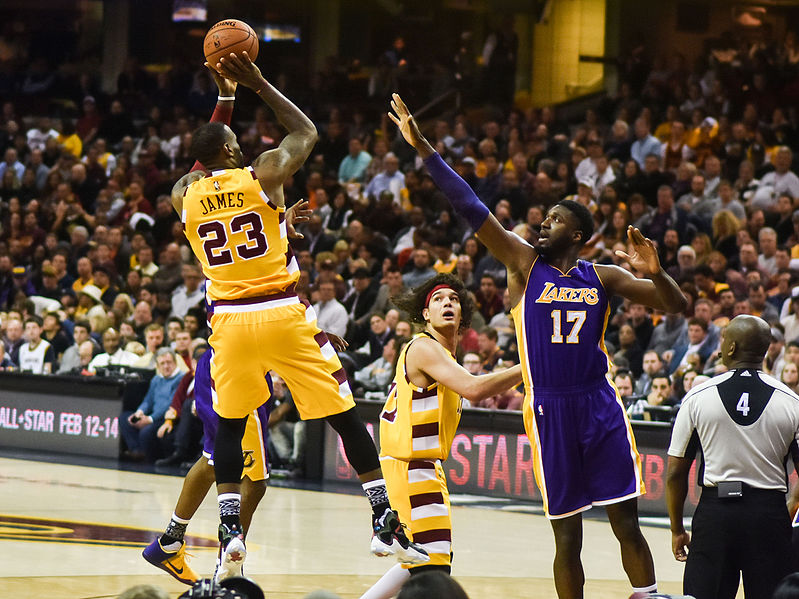No team is more symbolic of Los Angeles culture than the Lakers. If you need a reminder of how deep Laker’s history runs, just look at the jerseys hanging from the Staples Center ceiling. O’Neal, Abdul-Jabar, Worthy, Johnson, West, and Bryant might be familiar names to you. If you haven’t heard of these players, Lebron James now sports the infamous purple and gold. These players are representative of something larger than the game—the culture of LA. Magic Johnson has a star on the Hollywood Walk of Fame and has been referred to in the LA Times as a “civic leader” of Los Angeles. Meanwhile, James—shortlisted for the greatest player of all time—is cast in the star role of the upcoming movie Space Jam 2, the sequel to the highest-grossing basketball film of all time. But there is another team competing for Los Angeles’s attention: the Clippers. While the Clippers have acquired a star of their own in small forward Kawhi Leanard, his quiet demeanor and aversion to the limelight make it unlikely that he’ll ever be looked at as the face of the city.
What makes the Lakers special is their front office’s skill at creating and cultivating a following. In 2011, the organization signed a 20-year contract worth $4 billion with Time Warner Cable. This contract is, to this day, the most lucrative media deal in NBA history and demonstrates the power the Lakers possess as a national and global brand. The deal allows the team to monopolize NBA media coverage, with every game easily available to fans worldwide. Through merchandise sales and media coverage, the Lakers poach local and national attention away from the Clippers. In a list of the top ten most popular merchandise items, published by the NBA, the Lakers ranked number one while the Clippers did not rank at all.
While the teams manage to co-exist, their relationship is not symbiotic. The Clippers have a history of lackluster attendance, particularly when compared to the Lakers. In Scott Fender’s 2008 article on what it means to be a Clippers fan, he writes, “Go to a Clippers-Lakers game and it is easily 95 percent or more Lakers fans or Lakers haters. There are no Clippers fans to be seen for rows and rows.”
In the 2018-2019 season the Lakers averaged a home court attendance of 18,997, while the Clippers averaged an attendance of 17,325. When it comes to measuring interest in a team 1,500 people becomes a moderately large margin. Since the 1948-1949 season the Lakers have won 16 NBA Championships; meanwhile, the Clippers have never won an NBA championship, and for many years did not qualify for the Western Conference semifinals.
But the tide seems to be turning for the Clippers. Doc Rivers took over as head coach in 2013 and led the Clippers Pacific Division Championship victory over the Lakers, and they have been picking up momentum. The next year, they beat the Suns 112-108 to claim their second division title in the modern NBA era.
Doc Rivers, to this day, is pushing for improvements and change. Rivers wants the Clippers to move to a new arena being built in Inglewood, set to open in 2024 when the Clippers’ lease at the Staples Center expires. Rivers believes that the Clippers need “separation” from the Lakers. He thinks that separating the teams can help bring the Clippers an individual identity and an expanded fan base. “There’s enough people in L.A. Let’s just keep our fans and attract new fans,” he told the LA Times. “We’re always going to be the second child, but the second child can win titles.”
Perhaps Rivers is on his way to reaching his goal of winning titles and fans. In the opening game of the season on October 22, 2019, the Lakers and the Clippers squared off. The Clippers took the victory 112-102. But, no matter how impressive the Clipper’s recent success might be, Rivers knows it himself, they are still the secondary team.
The Lakers don’t have to beat the Clippers on the court to beat them in relevance. Los Angeles wants a team they can rally behind. It means something to go to a Lakers game; it has social and monetary value. As long as the Lakers continue attracting media attention, Los Angeles will continue to back them. The Lakers are the image of the city and the Clippers aren’t even pictured yet.




